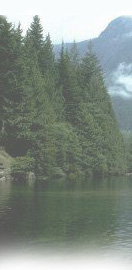| ||||||||||||||||||||||||||||
 Proactive disclosure Print version |  GSDNR Projects Importance of Data Standardization for Generating High Quality Earth Observation Products for Natural Resource Management This information represents activities in the Earth Sciences Sector Programs (2002-2006). Please refer to Priorities for information on current Earth Sciences Sector Programs.
Executive summaryA focus of immediate as well as longer-term interest to Canada is the improvement of natural resource management in the evolving framework of sustainable development. Sustainable resource management that seeks to safeguard the environment while deriving economic benefit necessarily requires information about past and current states of the geophysical and biospheric properties of the Earth. In particular, the establishment of monitoring frameworks for natural resource and environmental decision-support increasingly depends on geophysically consistent temporal series of Earth observation satellite data and the associated innovative methodologies. This addresses the first output of the Earth Sciences Sector (ESS) Program on Geomatics for Sustainable Development of Natural Resources (GSDNR). Ensuring that Earth observation data can be used reliably and quantitatively by non-specialists in the government and private sectors alike requires the development and use of product generation systems that include data standardization procedures developed by specialists. This too is in line with the GSDNR Program outcomes of more efficient and effective decision-making by communities, industry and sustainable development policy organizations involved in the sustainable development of natural resources and acknowledgement that ESS digital geospatial data are a definitive and essential source of information for sustainable development decisions. Sensor characterization, data standardization, product validation and quality assurance (often collectively referred to as calibration and validation) play integral roles in strengthening the various links in the chain from remote sensing and other data to information of value to users and decision makers in many areas, including sustainable resource management. When new technologies come along, such as instruments that measure and monitor the Earth from space, calibration and validation research must be undertaken to provide sound underpinnings for the new capabilities that result. Government programs and the geomatics industry are then well placed to build these new capabilities into their programs and innovations, leading to information products that the user community is prepared to adopt. Thus, with a view to illustrating the critical role that calibration and validation plays, the purpose of this report is to present a series of examples that illustrate for non-specialists what happens to the information content of Earth observation products with and without proper characterization and correction. Without adequate quality assurance (QA), the technology will not deliver the whole product that is needed to create the compelling value proposition that can win over markets. Innovations in data standardization are all the more important with respect to the newer Earth observation technologies such as hyperspectral and radar remote sensing that are of particular interest for Canadian applications development. Before presenting the examples, the report briefly reviews some user need and market studies carried out in the context of data standardization. A 1992 European study identified the lack of proper standardization in diverse applications, including those central to natural resource management, as a bottleneck to the growth of the Earth observation applications market. A 1995 Canadian study of remote sensing market needs for calibration-validation concluded that Earth observation will only become a mainstream information technology when it provides consistent data quality, which implies the development of appropriate standardization tools for use with advanced Earth observation technologies of interest to our user community. Three national workshops held from 1996 to 1998 to help establish strategic priorities for Canadian calibration-validation efforts from both technical and market perspectives adopted the view that calibration-validation is a QA issue from the user's perspective and that QA is essential to bring remote sensing fully into the mainstream. A 2004 user needs study confirmed that there is a definite need, especially in government agencies, for standardization of Earth observation data in support of sustainable resource management. It also recommended that ESS continue to develop its expertise in the calibration and validation of satellite-based Earth observation data, with a strategic focus on the key areas that directly support sustainable resource management. The examples in this report encompass both optical and microwave image data. In each case, the impact of not taking the extra steps of data characterization and standardization prior to or during product generation, including a variety of calibration steps, is provided in quantitative terms with respect to the products used for natural resource management. Examples of communities and agencies that currently benefit or will benefit from self-consistent data are noted in each case. The applications concerned are as follows:
Geospatial information needs are growing dramatically, in government and private agencies alike. Many if not most Earth observation applications have advanced to the point where high quality digital image products are essential for success. Raw or uncorrected imagery can no longer be used to provide meaningful information for natural resource management. At the same time, satellite sensor systems and image information extraction methodologies are advancing rapidly in quality and quantity. The several dozen Earth observation satellite systems currently operating in orbit will be joined during the next five years by a very impressive manifest of new systems, including Canada's RADARSAT-2. As we work toward the sustainable development of natural resources, these new Earth observation technologies will contribute information of significant economic, social, environmental, strategic, and political value to the extent that developments in data standardization and quality assurance keep pace.
|